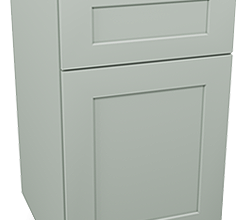
A Kitchens Norwich delivered by the German Kitchen organization Poggenpohl in 1892 Normalized was first presented locally with the Frankfurt kitchen, however later characterized new in the “Swedish kitchen” (Svenskköksstandard, Swedish kitchen standard). The gear utilized stayed a norm for quite a long time to come: hot and cold water on tap and a kitchen sink and an electrical or gas oven and broiler. Very little later, the cooler was added as a standard thing. The idea was refined in the “Swedish kitchen” utilizing unit furniture with wooden fronts for the kitchen cupboards. Before long, the idea was changed by the utilization of smooth engineered entryway and cabinet fronts, first in white, reviewing a feeling of neatness and insinuating sterile lab or emergency clinic settings, however not long after in more vivacious shadings, too.[citation needed] Some years after the Frankfurt Kitchen, Poggenpohl introduced the “change kitchen” in 1928 with interconnecting cupboards and useful insides. The change kitchen was a herald to the later unit kitchen and fitted kitchen.
Development of kitchens:

Unit development since its presentation has characterized the advancement of the cutting edge kitchen. Pre-made modules, utilizing mass assembling strategies created during World War II, incredibly cut down the expense of a kitchen. Units that are kept on the floor are designated “floor units”, “floor cupboards”, or “base cupboards” on which a kitchen worktop – initially frequently Formica and regularly now made of stone, marble, tile or wood – is set. The units which are hung on the divider for capacity objects are named “divider units” or “divider cupboards”. In little spaces of the kitchen in a condo, even a “tall stockpiling unit” is accessible for power capacity. In less expensive brands, all cupboards are kept a uniform tone, ordinarily white, with exchangeable entryways and extras picked by the client to give a changed look.
Open kitchens :
Beginning during the 1980s, the flawlessness of the extractor hood permitted an open kitchen once more, incorporated pretty much with the parlour without making the entire condo or house smell. Prior to that, a couple of prior tests, commonly in recently constructed upper-working class family homes, had open kitchens. Models are Frank Lloyd Wright’s House Willey (1934) and House Jacobs (1936). Both had open kitchens, with high roofs (up to the rooftop) and were circulated by bay windows. The extractor hood made it conceivable to assemble open kitchens in condos where both high roofs and bay windows were impractical
Re-coordination:
re-coordination of the kitchen and the living region went inseparably with an adjustment of the view of cooking, cooking was viewed as an innovative and now and again friendly demonstration rather than work. What’s more, there was a dismissal by more youthful property holders of the standard rural model of discrete kitchens and lounge areas found in most 1900–1950 houses. Numerous families likewise liked the pattern towards open kitchens, as it made it simpler for the guardians to regulate the kids while cooking and to tidy up spills. The upgraded status of cooking likewise made the kitchen an esteem object for flaunting one’s abundance or cooking polished skill. A few draftsmen have benefited from this “object” part of the kitchen by planning unattached “kitchen objects”.


